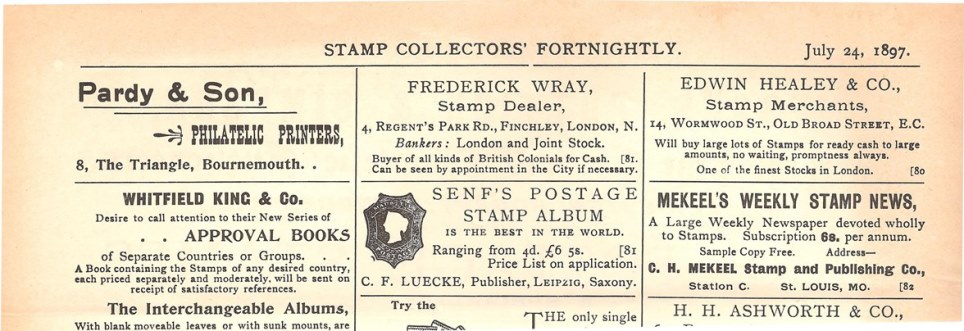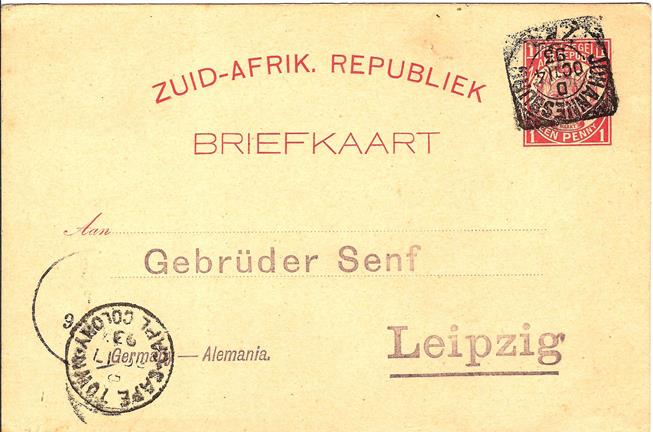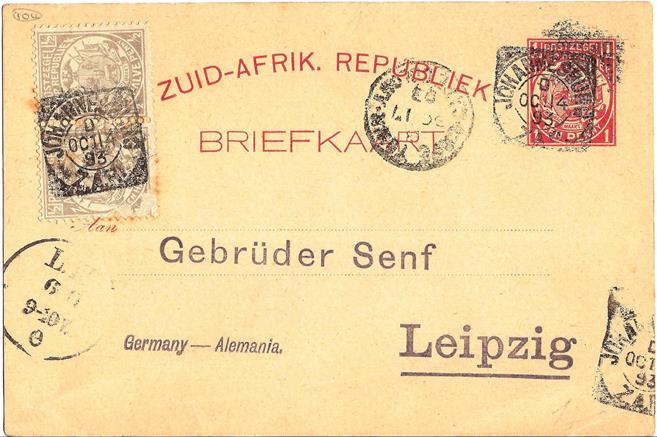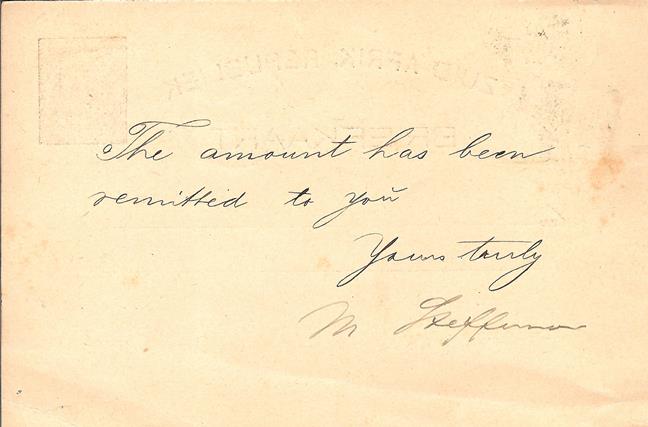References
1 Matthews, J., and Woolgar, J., (2009), Richard Senf Illustrated Postage Stamp-Album, The Transvaal Philatelist, vol.44, no.2 (170), pp.30-31.
2 For a list of Senf Brothers stamp catalogues 1892 to 1909 lodged with the British Library - see, (1991),
Catalogue of the Crawford Library of Philatelic Literature at the British Library, The Printer’s Stone Limited
in Association with the British Library, p.349-352. A copy can be viewed in the 'Rare Books and Music' Reading Room of
the British Library (London) on open access at shelfmark: RAR 769.56. Please bear in mind that a reader’s pass will be required.
3 British Library shelfmark for the year 1888: Crawford 875(17), Senf Illustrierte Briefmarken - Journal 1888.
4 Tyler V. E., (1968), The Gebrüder Senf Facsimiles, in The Congress Book 1968, Thirty-Fourth American Philatelic Congress, October 4-6, 1968,
The American Philatelic Congress, Inc. pp.187-198.
5 Tyler V. E., (1991 revised edition), Philatelic Forgers, their lives and works, Linn’s Stamp News, Ohio, p.115-116.
(Brian Birch, records there is very little difference between this revised edition and the first edition.
6 Ibid Tyler V. E., (1968), p.189.
7 '1893 September 15. The letter rate to other member countries was
reduced to 2½d (as with the UK), postcards to all countries were reduced to 1d and printed matter to all countries was reduced to ½d – again with
no weight specified.' Mathews, I.B., (1986), Transvaal Philately, Cape Town, p.186.
8 van den Hurk, G., (1988), The overseas postal rates for postcards in the Z.A.R., The Transvaal Philatelist, Vol.23, No.1 (87), p.5.
9 van den Hurk, G., (1989), Z.A.R. Postal Rates, The Transvaal Philatelist, Vol.24, No.3 (91), p.59.
This page was born on 20th September 2025.
Copyright © 2009 & 2025 Jeff Woolgar
- - Senf Stamp Catalogues - -
- - Return to Postcard publishers, dealers - -
- - o - -
|



